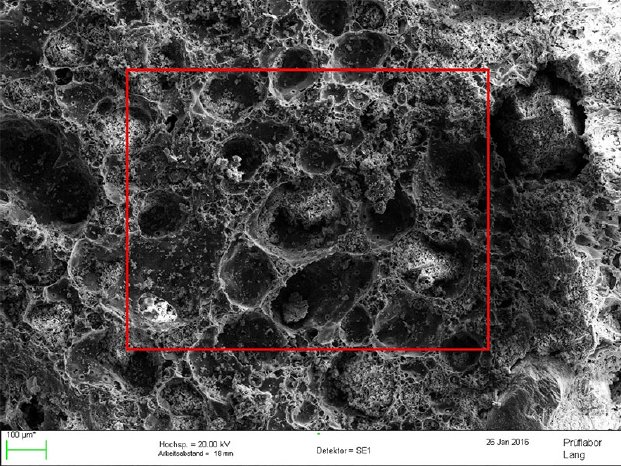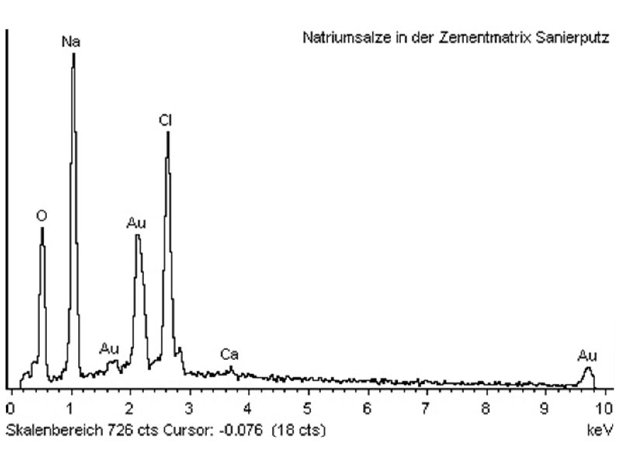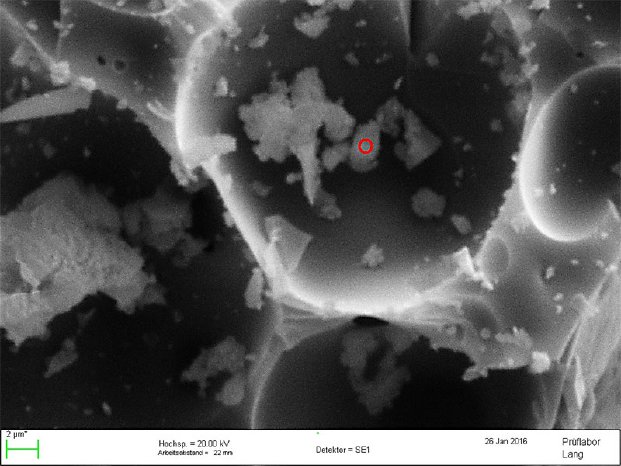Efflorescence in construction
Renovation renders are used for the renovation of humid walls. The moisture causes efflorescence and salt crystallization, which can turn in structural damages. Both existing buildings and new buildings are affected. The reason for the efflorescence can be for example structural deficiencies or unsealed basement walls. The renovation of those buildings needs at first a proper sealing of the leakage and a removal of the salt in the walls without generating further damages. One possibility is the usage of renovation renders.
The problem of efflorescence can have many reasons and manifestations. Efflorescence occur on renders, pavements, cement blocks, bricks etc. Most commonly efflorescence is formed by carbonation of lime (Ca(OH)2) or salts (sodium chloride, sulfate or nitrate). These materials can be either part of the formulation, the hardening reaction or can be absorbed from the environment in combination with leakage. In addition to the optical problems on a render surface, such as the mentioned efflorescence or hygroscopic spots, the continuous crystallization of salt will lead to a delamination of paint, deposits and the gradual destruction of the render caused by the increased stress of the building material structure during frost.
Renovation of efflorescence
In the cases of efflorescence caused by the carbonation of lime Ca(OH)2 the issue can be solved by adding pozzolanic co-binders or the usage of aluminate cements to catch or even not to form the portlandite.
Efflorescence based on salt disposal in combination with a leakage need a different approach. A simple sealing with a water proofing layer of the wet area and renewal of the render is not suitable to solve the problem as water will just rise higher due to the capillary effect and the same damage will occur in the next level. The renovation of salt contaminated brick work/walls has to be done in 2 steps:
- Stopping of water supply
- Drying out of the wall and allow a crystallization of the salt without damaging the new render layer.
Mortar systems that support this out drying and crystallization are described in “WTA Merkblatt 2-9-04/D” in addition to EN 998 “Specification for mortar for masonry. Rendering and plastering mortar”. The special design of the render formulation will allow the water to evaporate easily and the salt will crystalize in the pore system of the renovation render without damaging the binder matrix. To achieve its special properties renovation renders have to fulfill the following requirements:
- Air content: > 25 vol.-%
- Dry density: < 1.400 kg/m3
- Capillary water absorption (24h, disc): > 0.3 kg/m2
- Water intake: < 5 mm
- Water vapor coefficient (m-value): < 12
- Porosity: > 40 vol.-%
- Salt resistance: passed
One challenge of the formulation is to achieve a high volume and stable pore system and a balanced hydrophobicity. The pores have to be stable during mixing and application but also need to be relatively large in size to stop the capillarity and to have enough space for the salt to crystallize. Typically pores in renders are “generated” by using air entraining agents. The disadvantage of air entraining agents is their dependency on mixing time and speed as well as their interaction with hydrophobic agents, especially at high air content levels. A possibility to stabilize the air content in renovation render is to use Poraver® expanded glass to reduce the density and to add a specific pore geometry.
In our research we wanted to find out if Poraver® granules are able to store salt crystals. In this case they would not only stabilize the render due to the low density but also function as a source for reliable and stable pores in this systems supporting the pores formed by air entraining agents. Prisms of the materials were prepared and infiltrated with salt according to “WTA Merkblatt 2-9-04/D” for renovation mortar systems. From those prisms small samples were cut approx. 0.5 cm below the surface with efflorescence. The samples were freed from dust by means of compressed air and sputtered with gold.
Analysis
SEM (scanning electron microscope) pictures of different areas were prepared and the chemical composition at different points were determined by EDX (energy dispersive X-ray spectroscopy) measurements. Those pictures show particles inside the pores of Poraver®. EDX diagrams show in addition to the peaks formed by Poraver® (Al, Si, Mg, O, Na) also a strong peak of chlorine and an increased peak for sodium. At another area sulfur from Na2SO4 could be detected. So crystals of both salts (NaCl and Na2SO4) that were used for the infiltration could be detected inside the Poraver® granules. Comparative tests on air voids in the renders without Poraver® in the matrix showed similar results.
Conclusions
Salt cannot only crystallize in air pores of a renovation render but also in the pores of a lightweight aggregate as long as the pore diameter is big enough and the pore system is open to the surface. Poraver® does not only stabilize the air pores inside the render by reducing the density but also act as active pore volume that allows salt to crystallize without damaging the render. The main advantage of the stable Poraver® pore volume is, that it is independent from mixing time and application. In this way Poraver® supports a hassle-free formulation for that kind of renders and a stable and proven product quality not relying on “perfect” job-site conditions.
Further information:
You can request our non-binding formulation for renovation renders here.
Find further information and more pictures here.






